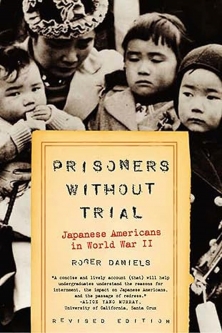World War Two - Japanese-American Internment
Japanese-American Internment Film Clips
An interesting article, written with a sense of embarrassment regarding the injustice done to the Japanese-Americans, and published a few weeks shy of VJ-Day. The article reports on how the former internment camp families were faring after they were released from their incarceration. 55,000 Japanese-Americans chose to remain in the camps rather than walk freely among their old neighbors; one man, Takeyoshi Arikawa, a former produce dealer, remarked:
"I would like to take my people back home, but there are too many people in Los Angeles who would resent our return. These are troubled times for America. Why should I cause the country any more trouble?"
Attached is a chart that served to document the occupations of all the Isei and Nesei adults who were interned during the course of the war. Even under the gloomy conditions of the camps the wheels of commerce continued to turn ~and they turned out an impressive $3,526,851.77! As can clearly be seen in the plans of the camps that are offered on this site, the camps all had commercial districts where the interned families could purchase needed goods and services; the ten Japanese-American internment camps had 160 businesses operating within their gates that managed to employ 1,853 souls. The attached chart from the 1944 records of the War Relocation Authority serves to illustrate the productivity of all these assorted commercial operations that had once thrived in the camps. The attached chart shows the total number of elementary and high school students who were enrolled at the ten Japanese-American internment camps during the period leading up to March, 1943. A black and white schematic drawing depicting the "Tule Lake Relocation Center", which was located in Tule Lake, California. The plan clearly illustrates how the residential huts were to be placed in addition to the churches, shops and schools.
Attached is a black and white plan depicting the "Rohwer Relocation Center", which was located in Desha County, Arkansas. The plan clearly illustrates how the residential huts were to be placed in addition to the churches, shops and schools. |
MORE ARTICLES >>> PAGE: * 1 * 2 * 3 * 4 * |
|
| - from Amazon:
 |
|
|
|